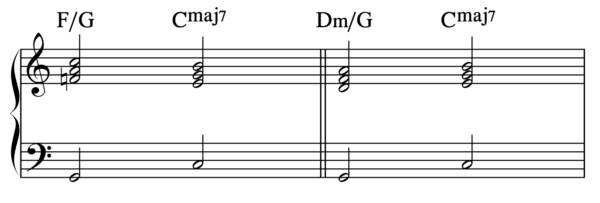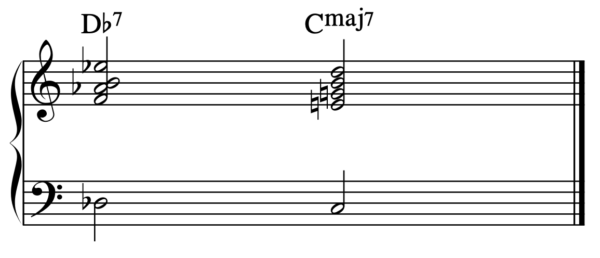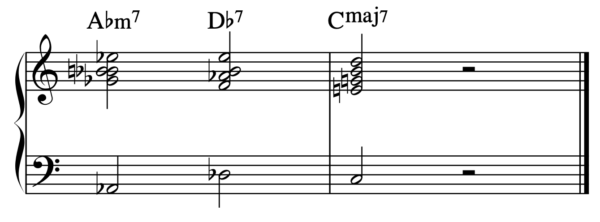Substituting chords in jazz part 2
Substituting chords in jazz is a great way to extend your harmonic vocabulary when soloing or harmonising a tune. In a previous blog I gave you examples of some basic ways to swap one chord or set of chords for another. Here in part 2 I cover some more advanced approaches.
Substituting chords for the dominant.
We usually approach the tonic chord (I) with the dominant (V), for example G7 – C. But what if we substitute this approach chord for another that still sounds good?
Slash chords
In the following two examples both sequences resolve with the tonic chord. However, the preceding chord in example 1 is a IV (subdominant) chord but with a V note in the left hand. And in the second example the preceding chord is a II minor with a V note, again, in the left hand.

The chord symbol for a slash chord: the letter before the slash is the chord and the letter after the slash is a single note.
Substituting a chord in place of the dominant.
We are still looking for harmonies that replace the dominant chord but still resolve to the tonic in a satisfactory way. In other words, it should sound acceptable and pleasing to your ear.
Let’s start with approaching the tonic chord from a half step up. So now, in the key of C major, instead of G7 – Cmaj7 we replace the G7 with Db7. Our sequence is now Db7 – Cmaj7, and looks like this.

And if you haven’t spotted this already, the chord Db7 is a tritone substitute of G7, in other words three whole stops away. Tritone substation is a whole subject in itself and is covered fully in my course.
The next step is to imagine that this Db7 is a dominant (V) chord and then precede it with its minor II chord. We are back in II-V-I territory here but with the difference that this time the V is not resolving to its normal tonic. If it was, the sequence would be Abmin7 – Db7 – Gbmaj7. But here we will not be resolving to Gb major but to C major! It now looks like this.

Here’s an example of this sequence in the A section of Satin Doll from bar 5.

Another substitute chord for the V is the VII or leading note chord. So let’s now replace G7 with B7.

And in the same way as before, if we precede the B7 with its minor 2 chord the result is as follows.

To subscribe to my complete video course click here.